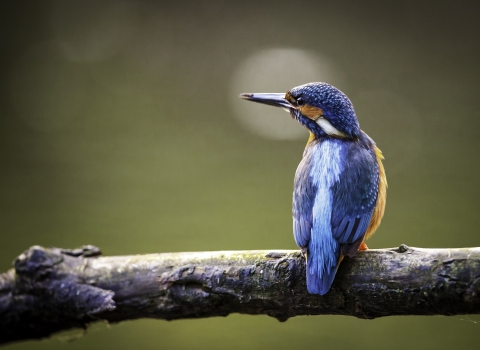
Orchids and wildflowers at Slievenacloy (c) Ronald Surgenor
Slievenacloy Nature Reserve
Know before you go
Dogs
No dogs are allowed in the fields. Paths only
When to visit
Opening times
Open at all timesBest time to visit
May to SeptemberAbout the reserve
Situated in the Belfast Hills, between Stoneyford and Divis Mountain, Slievenacloy is one of the best examples of a species-rich grassland in Northern Ireland.
This vast wilderness – a mosaic of unimproved meadows, purple moor grass and rush pasture – offers breathtaking views across Belfast and five of the six counties of Northern Ireland. Our largest nature reserve, Slievenacloy is undoubtedly one of the most beautiful: a treasure trove through every season.
Spring begins with primroses, cuckooflowers and early purple orchids painting the grassland with splashes of colour.
Summer brings a profusion of wildflowers particularly orchids, with nine species recorded here. In a good year, you might see thousands of common spotted and butterfly orchids, plus rarer varieties like lesser butterfly, small white and frog orchids.
Butterflies and moths are plentiful and few sites rank as high in Northern Ireland. Look out for beautiful grassland butterflies such as orange-tip, small copper, small heath, common blue, dark green fritillary, meadow brown and ringlet. Rare or uncommon moths include red carpet, wood tiger, narrow-bordered bee hawk-moth and marsh pug.
On summer days scan the fields, fence posts and hedgerows - these are stomping grounds of skylark, meadow pipit, stonechat, linnet, reed bunting and more. Listen out for cuckoo and grasshopper warbler, both scarce in Northern Ireland. Notable birds that have occurred on spring passage include ring ouzel and grey shrike.
If you’re lucky, you might spot Ireland’s only reptile, the common lizard, basking in the sun.
Autumn brings a multitude of brightly coloured waxcap fungi to the grassland. 26 out of 43 Irish species have been recorded here, ranking Slievenacloy as the second-best site for waxcaps in Ireland. The most striking of these is the vibrant pink meadow and regal waxcap.
Though bleak and windswept, even winter is a brilliant time to visit, with raven, goldfinch and linnet some of the top birds to spot.
To maintain Slievenacloy’s fragile habitats and special wildlife, the reserve is grazed with traditional livestock such as Irish moiled cattle from early summer to mid-winter. We also carry out essential habitat management including rush cutting and scrub control.
Our first super-sized nature reserve
In Spring 2022, we doubled the size of Slievenacloy by purchasing an additional 133 hectares of adjacent land to help create a more connected and resilient landscape for nature to thrive. The super-sized nature reserve is now equivalent to about 480 football fields.
The land acquisition was only possible thanks to the generosity of Ulster Wildlife members leaving gifts in their wills alongside philanthropic loans from Nick Marple, Andrew MacKay, Peter Solly and Julia Davies, funding from DAERA and a donation from Moy Park.
Find out more about leaving a gift in your will to wildlife.

